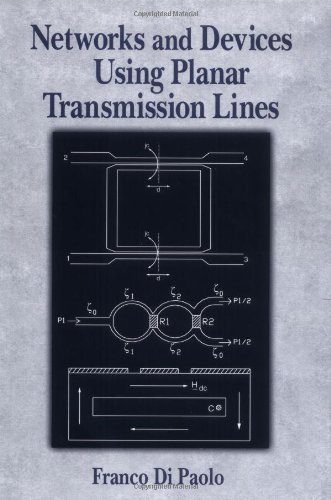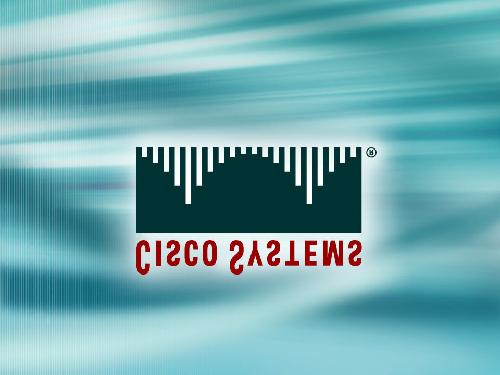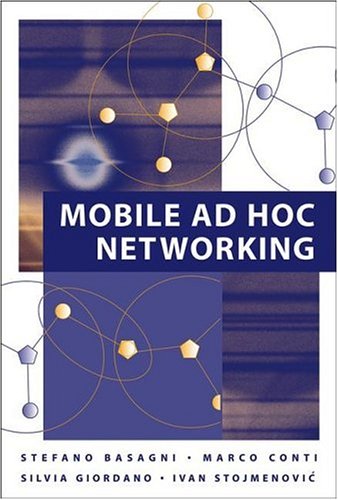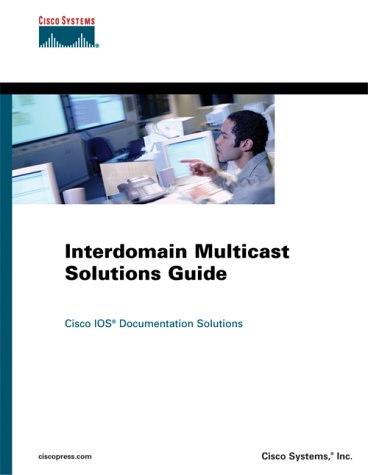Franco Di Paolo0849318351, 9780849318351
Table of contents :
Networks and Devices Using Planar Transmission Lines……Page 1
ABSTRACT……Page 4
The Author……Page 5
CONTENTS……Page 6
PREFACE……Page 12
Contents……Page 0
Networks and Devices Using Planar Transmission Lines……Page 14
1.1Generalities……Page 15
1.2“Telegraphist” and “Transmission line” equations……Page 16
1.3Solutions of transmission line equations……Page 19
1.4Propagation constant and characteristic impedance……Page 22
a.Terminations at the INPUT of the Line……Page 25
b.Terminations at the OUTPUT of the Line……Page 26
1.6“Transmission” and “Impedance” Matrices……Page 29
a. Ratio of Bandwidth Limits……Page 32
c. Octave……Page 33
1.8Reflection coefficients and standing wave ratio……Page 35
1.9Nonuniform transmission lines……Page 43
1.10Quarter wave transformers……Page 47
1.11Coupled transmission lines……Page 54
1.12The Smith chart……Page 69
1.13Some examples using the Smith chart……Page 76
1.14Notes on planar transmission line fabrication……Page 82
References……Page 83
2.1Geometrical characteristics……Page 86
2.2Electric and magnetic field lines……Page 87
2.3Solution techniques for the electromagnetic problem……Page 88
2.4Quasi static analysis methods……Page 89
2.5Coupled modes analysis method……Page 92
2.6Full wave analysis method……Page 93
2.7Design equations……Page 95
2.8Attenuation……Page 98
2.9Practical considerations……Page 102
REFERENCES……Page 103
3.1Geometrical characteristics……Page 107
3.3Solution techniques for the electromagnetic problem……Page 108
3.4Extraction of stripline impedance with a conformal transformation……Page 109
3.5Design equations……Page 111
3.6Attenuation……Page 113
3.8Practical considerations……Page 116
REFERENCES……Page 118
4.1Radiation……Page 121
4.2Surface waves……Page 123
4.3Higher order modes……Page 125
4.3.1mStrip Case……Page 126
4.3.2Stripline Case……Page 127
4.4Typical discontinuities……Page 128
4.5Bends……Page 129
4.5.1mStrip Case……Page 130
4.6.1mStrip Case……Page 132
4.7Gap……Page 134
4.7.2Stripline Case……Page 135
4.8.1mStrip Case……Page 136
4.9“T” Junctions……Page 138
4.9.1mStrip Case……Page 139
4.9.2Stripline Case……Page 140
4.10.1mStrip Case……Page 141
REFERENCES……Page 143
5.2Electric and magnetic field lines……Page 147
5.4Quasi static analysis methods……Page 149
5.5Coupled modes analysis method……Page 151
5.6Full wave analysis method……Page 153
5.7Design equations……Page 155
5.8Attenuation……Page 160
5.9A particular coupled microstrip structure: the meander line……Page 163
REFERENCES……Page 168
Networks and Devices Using Planar Transmission Lines……Page 170
6.1Geometrical Characteristics……Page 171
6.2Electric and magnetic field lines……Page 172
6.3Solution techniques for the electromagnetic problem……Page 174
6.4.1SCS……Page 175
6.4.2BCS……Page 176
6.4.3OBCS……Page 178
6.5Attenuation……Page 180
6.6A particular coupled stripline structure: the meander line……Page 183
REFERENCES……Page 189
7.1Simple two port networks……Page 192
a.Stubs……Page 193
e.RESONATORS……Page 196
g.BALUN……Page 199
7.2.1Branch Line……Page 201
7.2.2.“Rat Race” or “Magic T”……Page 206
7.2.3“In-Line” or “Wilkinson”……Page 211
7.2.4Step Coupled Lines……Page 221
7.2.5Tapered Coupling……Page 239
7.2.6Interdigital or “Lange”……Page 247
7.3Signal Combiners……Page 255
7.3.2“Rat Race” or “Magic T”……Page 256
7.3.3“In Line” or “Wilkinson”……Page 257
7.3.4Step Coupled Lines……Page 259
7.4.1Resonant Ring……Page 265
7.4.2Transverse Resonant Lines……Page 269
7.5.1Coupled Lines or “Schiffman”……Page 274
7.5.2Transverse Stubs or “Wilds”……Page 281
7.5.3Reflection Type……Page 284
7.6The Three Port Circulator……Page 289
7.7.1Reciprocal……Page 299
7.7.2Nonreciprocal……Page 302
a.Using a Circular Polarized “RF” Magnetic Field……Page 303
b.Using “Field Displacement”……Page 306
7.8.2Resonance Isolator……Page 311
7.9Comparison among ferrimagnetic phase shifters……Page 312
REFERENCES……Page 313
8.3Directional couplers……Page 319
8.6Phase shifters……Page 320
8.7The three port circulator……Page 321
8.8.1Reciprocal……Page 323
8.8.2Nonreciprocal……Page 324
a.Using Circular Polarized “RF” Magnetic Field……Page 325
b.Using “Field Displacement”……Page 326
8.9.1Field Displacement……Page 328
REFERENCES……Page 329
9.2Electric and magnetic field lines……Page 332
9.3Solution techniques for the electromagnetic problem……Page 334
a.Line of Magnetic Current Method……Page 335
b.Transverse Resonance Method……Page 337
9.4Closed form equations for slot line characteristic impedance……Page 338
9.5Connections between slot lines and other lines……Page 341
b.Connection with Microstrip……Page 342
d.Connection with Coplanar Waveguide……Page 344
a.180° Reciprocal Phase Shifters……Page 345
b.Magic “T”……Page 346
c.Mixers……Page 347
9.7Magnetization of slot lines on ferrimagnetic substrates……Page 348
9.8.1Resonance Isolator……Page 350
9.8.2Field Displacement Isolator……Page 351
9.9.1“Discon” Phase Shifter……Page 354
9.9.2Field Displacement Phase Shifter……Page 356
9.10.1General Characteristics……Page 357
9.10.2Analysis……Page 358
REFERENCES……Page 360
10.1Geometrical characteristics……Page 364
10.2Electric and magnetic field lines……Page 365
a.Conformal Transformation Method: CTM……Page 366
b.Finite Difference Method: FDM……Page 369
10.4Closed form equations for “CPW” characteristic impedance……Page 370
10.5Closed form equations for “CPW” attenuation……Page 372
b.Connection with Microstrip……Page 375
c.Connection with Slot Line……Page 376
a.Mixers……Page 378
b.Directional Couplers……Page 379
10.8Magnetization of “CPW” on ferrimagnetic substrates……Page 381
10.9.2Field Displacement Isolator……Page 382
10.10“CPW” ferrimagnetic phase shifters……Page 384
10.10.2Field Displacement Phase Shifter……Page 385
10.11.1The “CPW” with Bottom Ground Conductor……Page 387
10.11.2“CPW” with Bottom Ground Conductor and Lateral Planes with Limited Extension……Page 388
10.12.1General Characteristics……Page 389
10.12.2Analysis……Page 390
REFERENCES……Page 392
11.1Geometrical characteristics……Page 396
11.3Solution Techniques for the Electromagnetic Problem……Page 397
11.4Design equations……Page 400
11.5Attenuation……Page 401
11.7Use of “CPS”……Page 404
REFERENCES……Page 405
b.Poisson and Laplace Equations……Page 408
c.Boundary Conditions……Page 409
d.Green’s Function……Page 410
e.Gauss’s Law……Page 412
c.Conformal Transformation Method……Page 413
A1.3Finite Difference Method……Page 414
A1.4Image Charge Method……Page 416
A1.5Fundamentals on Functions with Complex VariableS……Page 419
A1.6Conformal Transformation Method……Page 422
A1.7The Schwarz-Christoffel Transformation……Page 423
REFERENCES……Page 427
A2.2Maxwell’s Equations and Boundary Conditions……Page 429
A2.3Wave equations in harmonic time dependence……Page 431
A2.4The propagation vectors and their relationships with electric and magnetic fields……Page 434
A2.6Plane wave definitions……Page 437
A2.7Evaluation of electromagnetic energy……Page 439
A2.8Waves in guiding structures with curvilinear orthogonal coordinate reference system……Page 441
A2.9“TE” and “TM” modes in rectangular waveguide……Page 446
1.TE Mode……Page 448
2.“TM” Mode……Page 450
A2.10“TE” and “TM” modes in circular waveguide……Page 452
1.TE Mode……Page 455
2.TM Mode……Page 459
A2.11.1Modes Inside a Coaxial Cable……Page 461
b.“TE” Mode……Page 462
c.“TEM” Mode……Page 464
A2.11.2Uniform Plane Wave……Page 467
A2.12Dispersion……Page 469
1.Associated Network for a “TM” Mode……Page 472
2.Associated Network for a “TE” Mode……Page 476
3.Associated Network for a “TEM” Mode……Page 477
4.Associated Network for a “UPW”……Page 478
A2.14Field penetration inside nonideal conductors……Page 479
REFERENCES……Page 484
b.[Y] Matrix……Page 486
c.ABCD or “Chain” Matrix……Page 487
A3.2Scattering parameters and conversion formulas……Page 488
d.Conversion from “[Z]” to “[ABCD]”……Page 491
A3.3Conditions on scattering matrix for reciprocal and lossless networks……Page 492
A3.4Three port networks……Page 493
A3.5Four port networks……Page 497
A3.6Quality parameters for directional couplers……Page 499
b.Isolation…….Page 501
A3.7Scattering parameters in unmatched case……Page 502
REFERENCES……Page 503
A4.1The intrinsic losses of real elements……Page 505
A4.2The quality factor “Q”……Page 506
A4.3Elements of filter theory……Page 512
2.Stop Band Region……Page 514
3.Transition Band Region……Page 515
A4.5Filter generation from a normalized low pass……Page 520
a.High Pass Filters……Page 523
c.Band Stop Filters……Page 524
A4.6Filters with lossy elements……Page 525
REFERENCES……Page 528
c.Third Principle of Dynamics……Page 530
4.Couple and Momentum of a Couple……Page 531
5. Vector “Quantity of Motion” and Vector “Angular Orbital Momentum of the Quantity of Motion”……Page 532
7.The Theorem of the Quantity of Motion……Page 533
A5.3Forces working on lone electric charges……Page 534
3.Lorentz Force……Page 535
4.Potential Energy of a Charge……Page 536
3.Vector “Magnetic Momentum” Produced by a Current in a Closed Wire……Page 537
1.Laplace Expression……Page 538
3.Ampere’s Expression……Page 539
2.The Energy-Frequency Relationship……Page 540
A5.7The foundations of atom theory……Page 541
A5.8The atom structure in quantum mechanics……Page 544
A5.9The precession motion of the atomic magnetic momentum……Page 547
A5.10Principles of wave mechanics……Page 553
REFERENCES……Page 558
A6.2Fundamental relationships for static magnetic fields and materials……Page 560
c.Ferromagnetic Materials……Page 562
A6.4Statistics functions for particle distribution in energy levels……Page 563
b.Bose-Einstein Function……Page 564
c.Fermi-Dirac Function……Page 565
A6.5Statistic evaluation of atomic magnetic moments……Page 569
b.Magnetostriction……Page 572
A6.7The Weiss domains in ferromagnetic materials……Page 573
A6.8Application of Weiss’ theory to some ferromagnetic phenomena……Page 575
a.Spontaneous Magnetization and Curie’s Temperature……Page 576
b.Ferromagnetic Paramagnetism……Page 577
c.First Magnetization Curve and Hysteresis Loop……Page 578
A6.9The Heisenberg Theory for the Molecular Field……Page 579
A6.11Antiferromagnetism……Page 582
A6.12Ferrimagnetism……Page 583
REFERENCES……Page 584
A7.2The chemical composition of ferrites……Page 586
a.Permanent Magnetization……Page 587
c.Paramagnetism……Page 588
d.Precession Motion……Page 589
A7.4The Permeability Tensor of Ferrites……Page 590
A7.5“TEM” wave inside an isodirectional magnetized ferrite……Page 600
A7.6Linear polarized, uniform plane wave inside an isodirectional magnetized ferrite: The Farada………Page 608
A7.7Electromagnetic wave inside a transverse magnetized ferrite……Page 612
A7.8Considerations on demagnetization and anisotropy……Page 617
A7.9The behavior of not statically saturated ferrite……Page 621
A7.10The quality factor of ferrites at resonance……Page 623
a.The Conduction Losses “Lc”……Page 624
c.The Residual Losses “Lr”……Page 625
a.Nonreciprocal Isolators……Page 626
b.Nonreciprocal Phase Shifters……Page 628
c.Circulators……Page 630
a.Nonreciprocal Isolators……Page 631
b.Phase Shifters……Page 632
c.Circulators……Page 633
A7.14Field displacement isolators and phase shifters……Page 634
a.Nonreciprocal Isolators……Page 640
b.Phase Shifters……Page 641
a.The Ferrite As Microstrip Substrate……Page 642
b.Nonreciprocal Isolators……Page 644
d.Three Port Circulators……Page 645
b.Tunable Filters……Page 648
A7.17Use of ferrite until UHF……Page 650
A7.18Harmonic signal generation in ferrite……Page 651
A7.19Main resonance reduction and secondary resonance in ferrite……Page 653
a.Main Resonance Peak Reduction……Page 654
b.Secondary Resonance……Page 655
REFERENCES……Page 656
A8.2.1Associated to Vectors……Page 659
A8.2.3General……Page 660
A8.3.1 : Vector Operator Nabla or Vector Operator Delta……Page 661
A8.4Delta operator functions in cartesian orthogonal coordinate system……Page 662
A8.5Delta operator functions in a cylindrical coordinate system……Page 664
A8.6Delta operator functions in a spherical coordinate system……Page 666
b.Stokes Theorem……Page 668
f.Green Two Dimensional Second Identity……Page 669
A8.8Elliptic integrals and their approximations……Page 670
REFERENCES……Page 671







Reviews
There are no reviews yet.